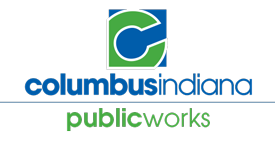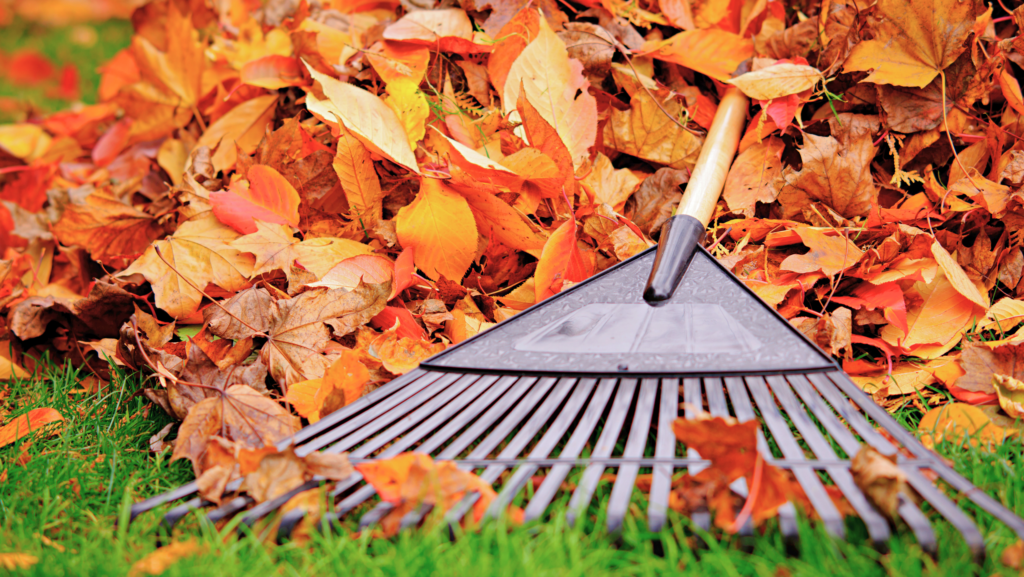
Fall 2024 Loose Leaf Collection Program
Regular routes for the 2024 Fall Loose Leaf Collection Program have ended.
Please call the Department of Public Works to create a ticket if you still have leaves that need to be collected.
About the Program:
Loose leaf collection is an annual program that runs during the fall months (October-December). Residents may rake their leaves to the curb for Leaf-Vac collection on their trash day.
How to Participate
Please have your leaves to the curb by 7 a.m. on your trash day for collection.
Leaf piles must be free of:
- Sticks or branches
- Vines
- Rocks
- Trash
- Pumpkins
- Pampas grass or decorative grass trimmings
- Tarps or coverings
These items can clog or damage the Leaf-Vac machines and cause them to break down. Please make a separate pile of sticks or branches from your leaf pile for the chipper truck to collect.
Leaves will not be collected if they are in bags. If you choose to bag your leaves you may bring it to the compost site located at 720 S. Mapleton Street, next door to the Department of Public Works. Please dump out your bags at the site and take your bags with you for reuse or properly dispose of them.
Leaf Pile Placement
Leaves should be piled in a row along the curb up to five feet wide and away from obstructions such as mailboxes, signs, or vehicles. Please do not place leaves in the sidewalk blocking access. Do not place leaves in the street, as they can clog storm drains and cause flooding in the roadway.
- For lawns with a sidewalk, place the piles between the sidewalk and the curb within the city right-of-way.
- For lawns with a sidewalk but no right-of-way, place the piles close to the edge of the sidewalk without blocking the sidewalk.
- For additions with a median, you may place the piles within the center median away from any trees or shrubs.
Please use the following graphics as a guideline for where to place your leaf piles:
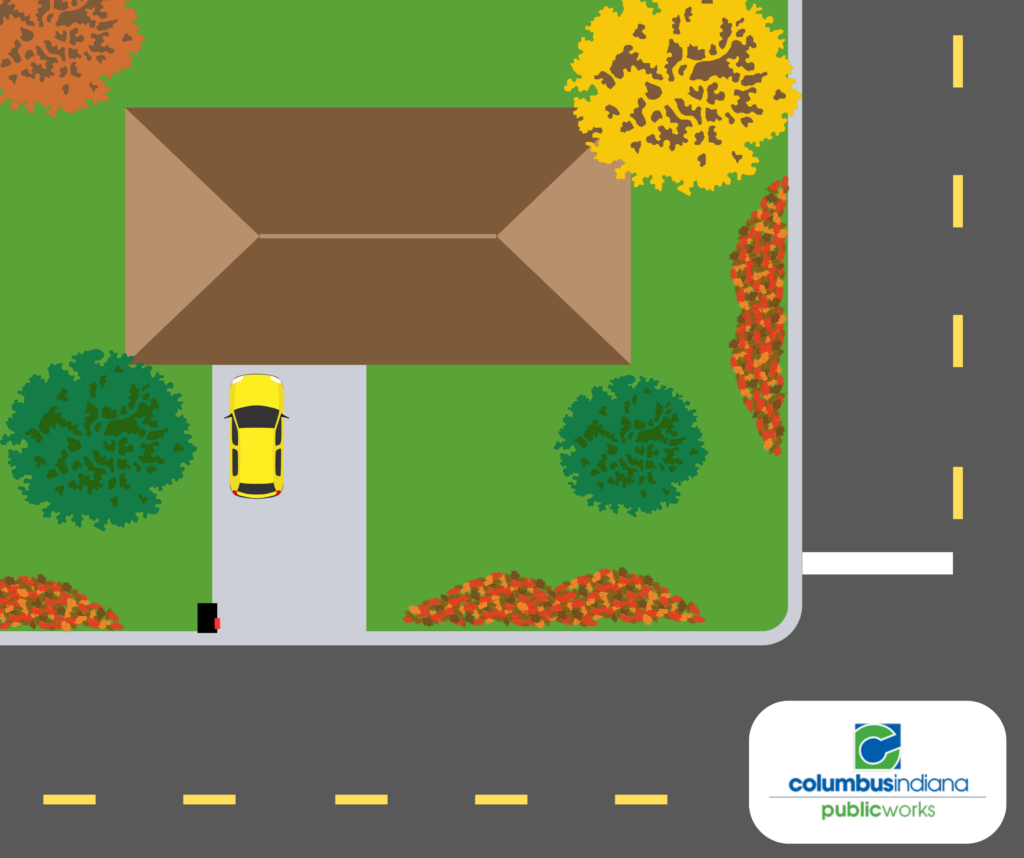
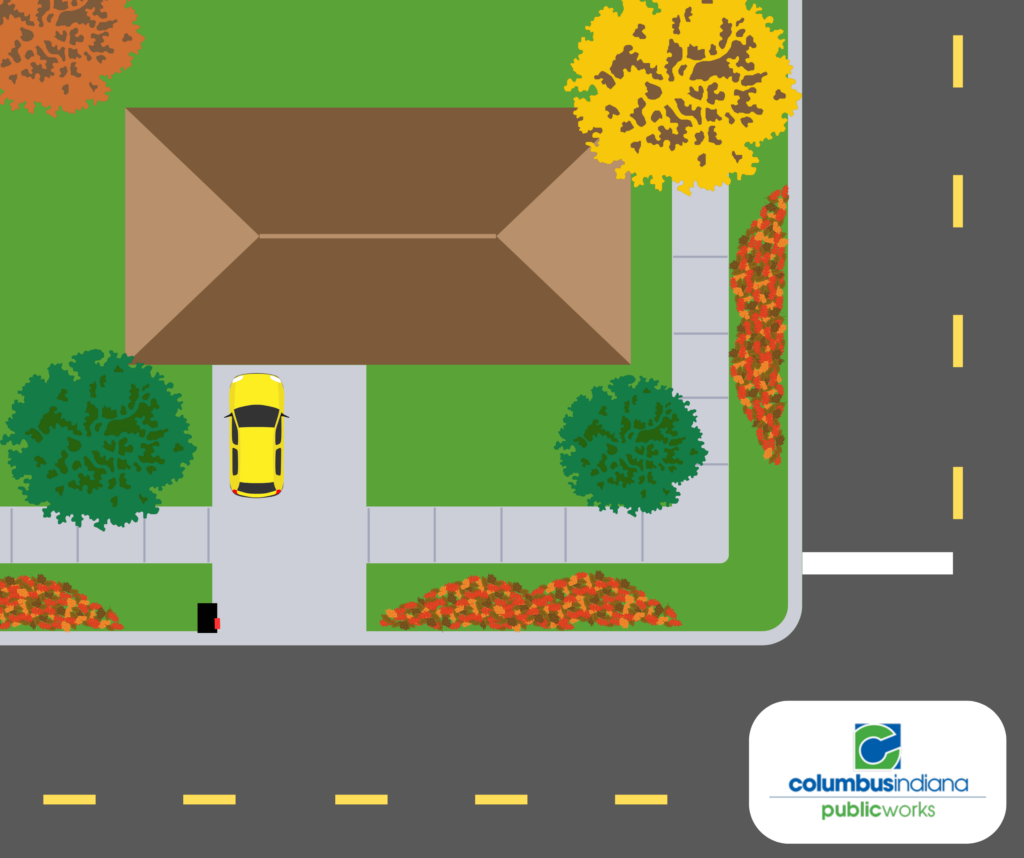
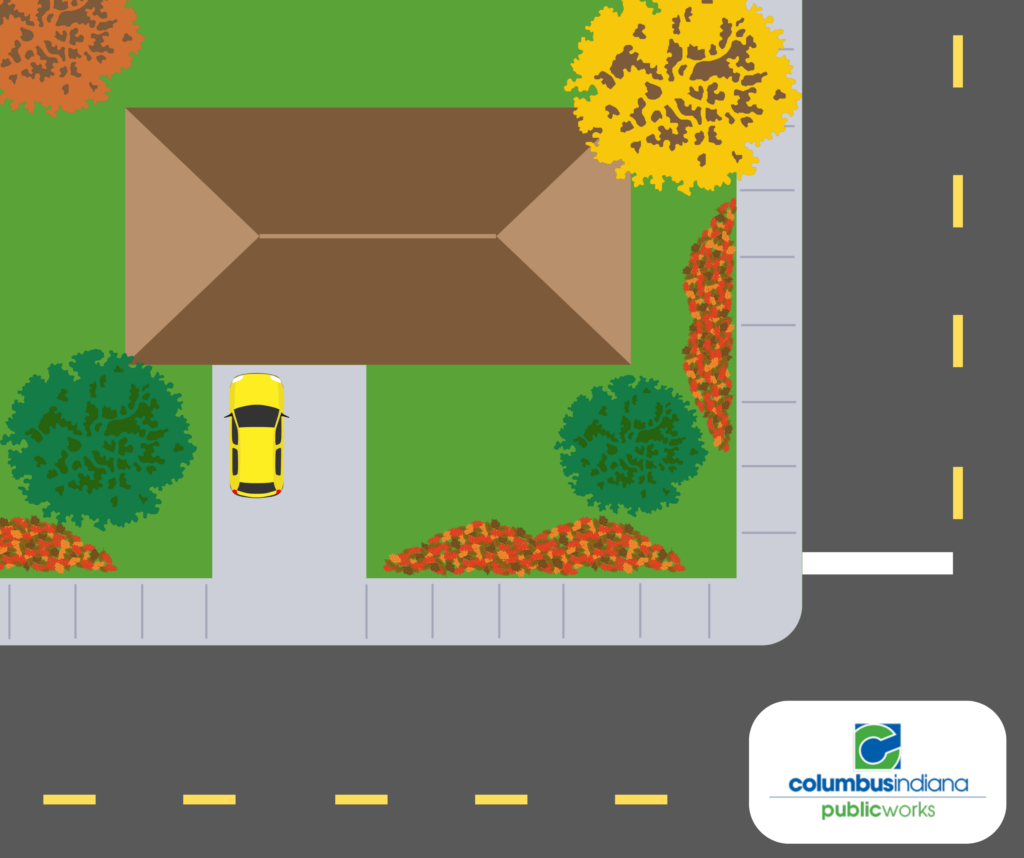
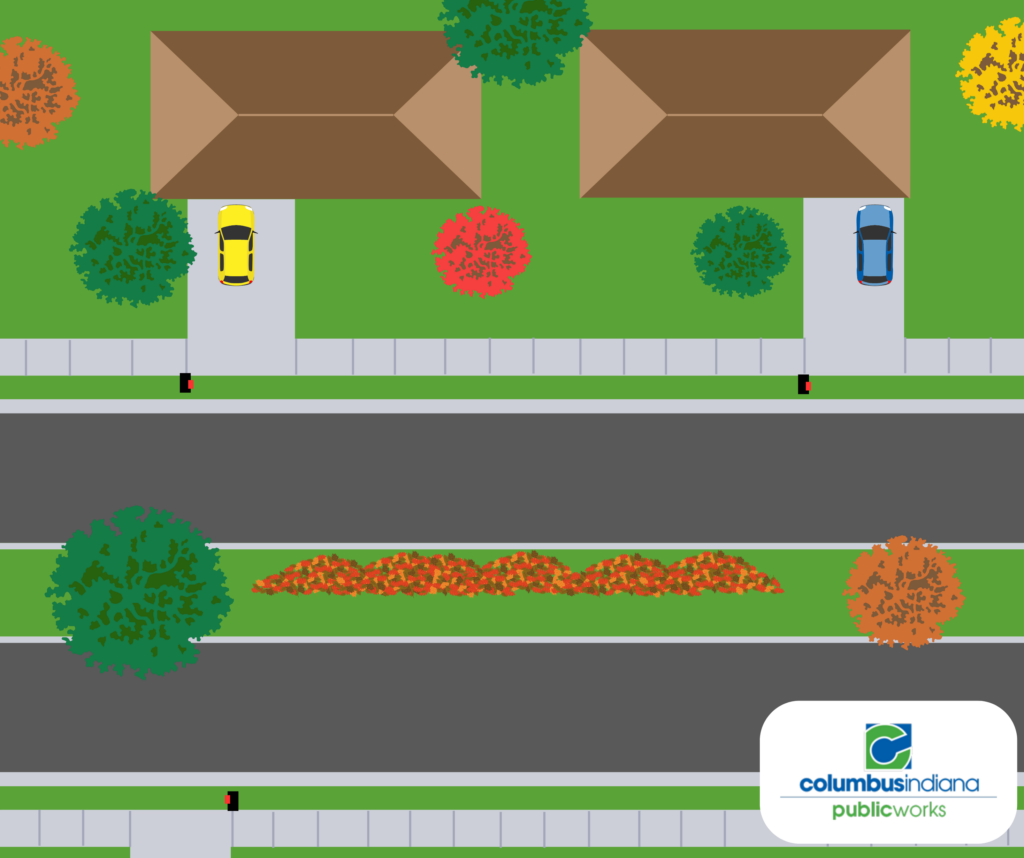
Leaf Routes
This year, the Department of Public Works is utilizing a new color coded route system for leaf collection. The system was developed to:
- Maximize efficiency
- Make it easier to communicate our daily collection operations with residents.
Every day of the week has been organized into four colored routes; red, blue, orange, and green. Each day, leaf collection crews will be assigned to a color route and will continue working on that route until it is completed before moving onto or assisting another one.
We will use this color coded system in a daily update each morning to inform residents of what areas we are working in that day.
To find your color route, use the button below. First, find your trash day, then find your addition or street within the color route blocks for that day.
Example: If your trash day is Monday, and you live in Oakbrook addition, your route is Monday’s Red Route.
Please know that we may run behind when the season gets heavy and there is a large volume of leaves to be collected. When this happens, we ask for your patience in collecting your leaves. Please refer to the daily update each morning to see where our crews are working.
The Lifecycle of Leaves
All leaves collected by our Leaf-Vacs are repurposed into composted material. Once the machine fills, the collected leaves are dumped into windrows at our site. Over time, the rows of leaves are turned with machinery which helps aerate and speed up the natural decomposition process. After a few months, the final product is a mulch that is rich in nutrients. This mulch can be added to regular soil and acts as a fertilizer for gardens, flower beds, trees, and shrubs. Please contact Bartholomew County Solid Waste Management for more information about leaf mulch and pickup availability.
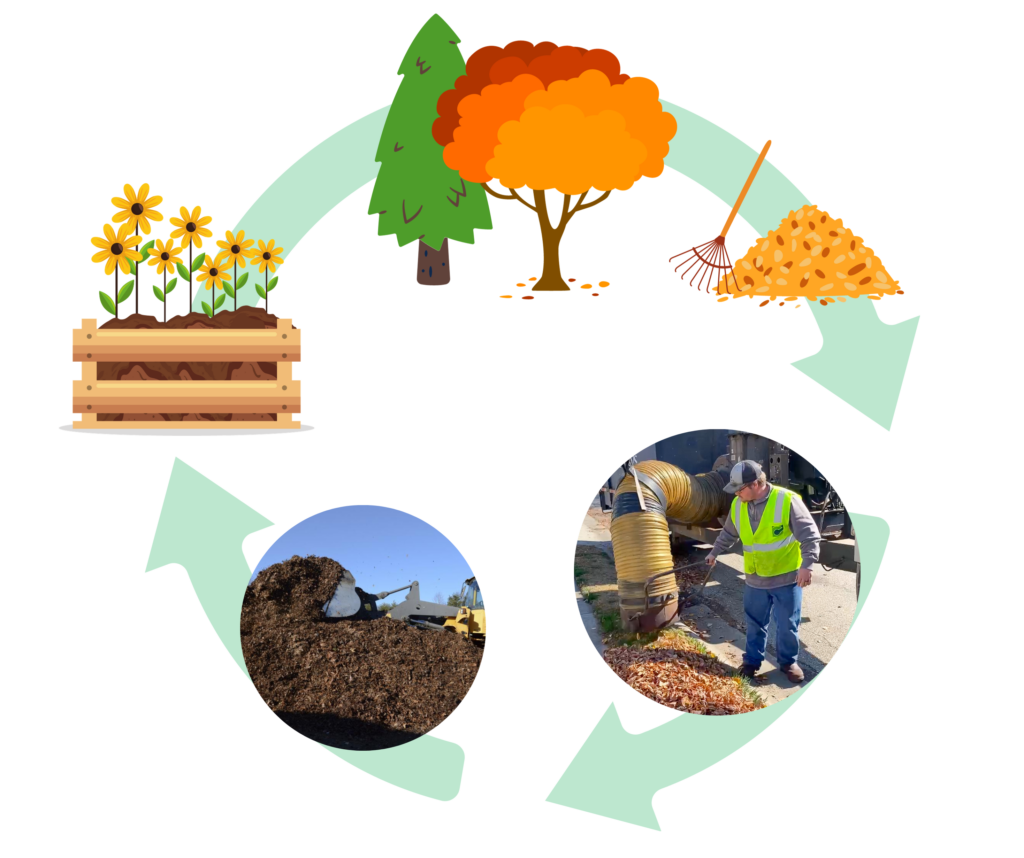
Public Works
Contact Us
Columbus Recycles
(812) 376-2509
City Sanitation
(812) 376-2509
City Street
(812) 376-2508
City Traffic
(812) 376-2518
Bartholomew County Recycling Center
(812) 376-2614
Bartholomew County Landfill
(812) 342-2756
Bartholomew County Highway Dept.
(812) 379-1660
Mosquito Issues
(812) 379-1550
Abandoned Houses
(812) 376-2593
